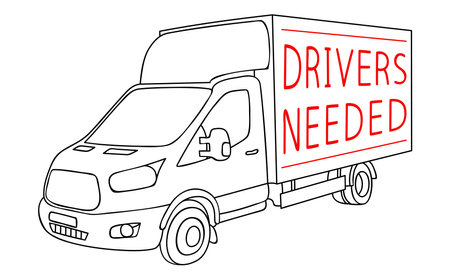1. Introduction: The EV Revolution Hits British Roads
In recent years, the United Kingdom has witnessed a remarkable transformation on its roads as electric vehicles (EVs) shift from novelty to necessity. With government initiatives like the 2030 ban on new petrol and diesel cars, British drivers are increasingly embracing cleaner, greener alternatives. This surge in EV adoption is not merely a technological change—it signals an evolution in national driving culture. However, as more motorists make the switch, familiar challenges such as limited charging infrastructure, range anxiety, and concerns over battery longevity have come sharply into focus. Against this backdrop, innovative solutions such as battery swapping are gaining traction in conversations about the future of sustainable mobility. By considering the unique needs of British drivers—from daily commutes through historic city centres to long-haul journeys across scenic countryside—this article explores whether battery swapping could offer a practical answer to some of the UK’s most pressing electric vehicle dilemmas.
2. What is Battery Swapping? A British Perspective
For many British drivers, the notion of battery swapping might seem a novel concept, yet it has the potential to redefine how we perceive electric vehicle (EV) ownership on these isles. In essence, battery swapping involves replacing a depleted EV battery with a fully charged one at designated stations, much like changing a propane cylinder or even reminiscent of our cherished tradition of exchanging empty milk bottles for fresh ones on the doorstep. This stands in contrast to the more familiar method of plugging in and waiting for a charge at home or at public charging points.
Demystifying Battery Swapping Technology
The technology behind battery swapping is rooted in automation and precision engineering. Specially designed stations employ robotic systems to extract the spent battery from underneath the vehicle and replace it with a charged unit in mere minutes—often less time than it takes to enjoy a cup of builder’s tea. This approach addresses two major concerns among British motorists: lengthy charging times and range anxiety, especially during long journeys across motorways or when venturing into rural landscapes where charging infrastructure remains sparse.
How Does It Compare to Traditional Charging?
| Feature | Battery Swapping | Traditional Charging |
|---|---|---|
| Time Taken | 3–5 minutes (on average) | 30–60 minutes for rapid chargers; 8+ hours for home charging |
| Convenience for Long Trips | High — quick stops akin to refuelling petrol cars | Moderate — requires planning around charger locations and waiting times |
| Infrastructure Requirements | Specialised stations with automated systems | Wallboxes at home, public charging points, motorway services |
| Cultural Fit in Britain | Potentially transformative for fleet vehicles, black cabs, delivery vans, and busy urbanites | Already established but sometimes leads to “charging queue” frustrations, particularly in densely populated areas |
A Motoring Culture Ready for Change?
The British motoring landscape is steeped in tradition, from Sunday drives through the Cotswolds to daily commutes along the M25. Our preference for efficiency and reliability means any new technology must align with these values. Battery swapping offers an enticing proposition: it preserves spontaneity while alleviating typical EV pain points. Yet its adoption depends on widespread station deployment and standardisation—challenges not unlike those faced by early petrol forecourts over a century ago.

3. Evaluating Longevity and Practicality for UK Drivers
When it comes to embracing new automotive technologies, British drivers have long demonstrated a discerning eye for both longevity and practicality. Battery swapping, as an emerging solution, warrants careful scrutiny against these time-honoured values. The real-world benefits extend beyond mere convenience; the system promises to enhance vehicle lifespan by mitigating one of the most significant concerns—battery degradation. With swift swaps minimising charge cycles and thermal stress, batteries are less likely to experience the accelerated wear common in traditional plug-in charging scenarios.
From a practical perspective, battery swapping aligns with the British tradition of reliability and efficiency. For motorists accustomed to seamless journeys through the rolling Cotswolds or the bustling streets of London, minimising downtime is paramount. A quick swap at a dedicated station could rival—or even surpass—the pit-stop efficiency of classic British motoring legends.
Moreover, battery health becomes a shared responsibility between driver and service provider. Routine inspections and maintenance at swap stations ensure that each battery remains in peak condition, reducing unexpected failures and reinforcing trust in electric mobility. This institutionalised care mirrors the meticulous standards set by iconic British marques throughout history.
Ultimately, the appeal of battery swapping for UK drivers lies in its harmony with local expectations: dependable performance, extended vehicle life, and an infrastructure that respects Britain’s penchant for orderliness and understated innovation. It offers not just a technical upgrade but a cultural fit—a modern answer to the enduring British quest for motoring excellence.
4. Infrastructure Challenges and Opportunities on British Soil
When considering whether battery swapping could truly become the future for British drivers, one must take a close look at the nation’s distinct and storied infrastructure. Unlike vast, grid-planned countries, the UK is defined by its historic city lanes, winding country roads, and legendary motorways—from the bustling heart of London to the tranquil stretches of the Lake District. Each landscape presents unique challenges and opportunities for rolling out a widespread battery swapping network.
The Urban Tapestry: Cities with Character
British cities are famed for their compact design and heritage architecture. Installing battery swap stations within these environments involves navigating planning permissions and space limitations, particularly in conservation areas or near listed buildings. Yet, urban density offers a silver lining: high vehicle turnover and short driving distances could make frequent swaps both practical and profitable.
Rural Roads and Countryside Realities
The picturesque rural stretches that connect villages and market towns are integral to Britain’s identity—and present logistical hurdles. Sparse population means lower demand density, raising questions about investment returns. However, many rural dwellers face “range anxiety,” making convenient battery swapping an appealing solution if logistical challenges can be overcome.
Motorways: The Lifeblood of Mobility
Britain’s beloved motorway system—spanning from the M1 to the M25—serves as a prime candidate for initial battery swap network deployment. Service stations already offer rest stops for drivers; integrating battery swapping here aligns with existing travel patterns and infrastructure footprints.
| Landscape | Key Challenge | Main Opportunity |
|---|---|---|
| Cities | Space constraints; heritage restrictions | High vehicle flow; concentrated demand |
| Rural Areas | Sparse population; longer distances between sites | Addresses range anxiety; supports local mobility |
| Motorways | Integration with existing services required | Natural fit with travel breaks; nationwide coverage potential |
In summary, the feasibility of implementing battery swapping across Britain hinges on balancing these diverse regional needs while respecting the character of each landscape. A tailored approach—not a one-size-fits-all solution—will be essential for success.
5. Consumer Sentiment: British Drivers and New Tech Adoption
Across the United Kingdom, the motorcar occupies a cherished place in both history and daily life. From the winding lanes of the Cotswolds to the urban pulse of Manchester, British drivers are deeply attuned to tradition yet increasingly conscious of sustainability. The notion of battery swapping, while technologically progressive, invites mixed feelings rooted in this dual allegiance. For many, there’s an enduring pride in the reliability and character of their vehicles—be it the sturdy Land Rover or the elegant Jaguar—that informs their openness to automotive innovation.
National surveys reveal that British motorists value convenience and longevity but often approach new tech with measured scepticism. Concerns over safety, quality assurance, and potential disruptions to trusted routines shape their initial perceptions. Battery swapping—promising rapid energy replenishment—holds appeal for those frustrated by lengthy charging times. However, questions linger about standardisation across brands, compatibility with existing infrastructure, and long-term cost benefits.
The British public’s attitude towards sustainability also plays a significant role. As environmental awareness grows, especially among younger generations and urban commuters, enthusiasm for green solutions is palpable. Yet, there remains a quintessentially British pragmatism: drivers seek evidence that such innovations will deliver tangible benefits without sacrificing dependability or inflating costs. Government endorsements and visible pilot projects can help bridge this gap between curiosity and widespread adoption.
Historically, British drivers have shown a willingness to embrace transformative technologies—from unleaded petrol to hybrid drivetrains—once reassured by robust regulatory frameworks and proven track records. Thus, battery swapping’s future may hinge on transparent communication from manufacturers and policymakers alike. Demonstrating real-world reliability, ease of use, and integration with beloved British marques could tip sentiment from polite interest to genuine enthusiasm.
6. Looking Forward: Will Battery Swapping Fuel Britain’s EV Future?
As we gaze into the electric horizon, the question of whether battery swapping will become the bedrock of Britain’s EV landscape looms large. The United Kingdom, steeped in a rich automotive tradition—where marques like Rolls-Royce and Aston Martin have set benchmarks for longevity and craftsmanship—now finds itself at a crossroads, facing the rapid evolution of mobility technology. Can battery swapping, a concept rooted in efficiency and speed, harmonise with Britain’s enduring values and expectations?
Forecasting a New Mainstay
The potential for battery swapping to become mainstream hinges on several quintessentially British factors: infrastructure readiness, consumer trust, and regulatory support. The nation’s penchant for innovation—seen in everything from the steam engine to Formula 1 engineering—suggests an openness to forward-thinking solutions. Yet, there remains an attachment to reliability and quality, traits embedded in the DNA of British motoring culture.
Legacy Meets Modernity
British automotive history is defined by brands that have weathered change through reinvention while holding onto their heritage. If battery swapping can be woven into this narrative—offering not just convenience but also extending vehicle lifespan and reducing ownership anxiety—it may well secure its place alongside such storied traditions. Much like how iconic double-decker buses transitioned from diesel to hybrid power without losing their charm, battery swapping could revitalise how Britons experience personal transport.
The Road Ahead: Challenges & Opportunities
Still, widespread adoption will require robust collaboration between legacy automakers, emerging tech firms, policymakers, and local communities. Trust must be built through proven reliability in British weather conditions and seamless integration with existing road networks. Furthermore, as environmental targets tighten and urban air quality becomes ever more pressing, battery swapping could serve as a catalyst for greener, more sustainable cities across the UK.
In sum, while battery swapping is not yet the dominant force in Britain’s EV revolution, its prospects are intertwined with the country’s unique blend of heritage pride and future-facing ambition. Should these elements coalesce successfully, we may witness a new chapter in British motoring—a harmonious fusion of time-honoured excellence and cutting-edge mobility.


